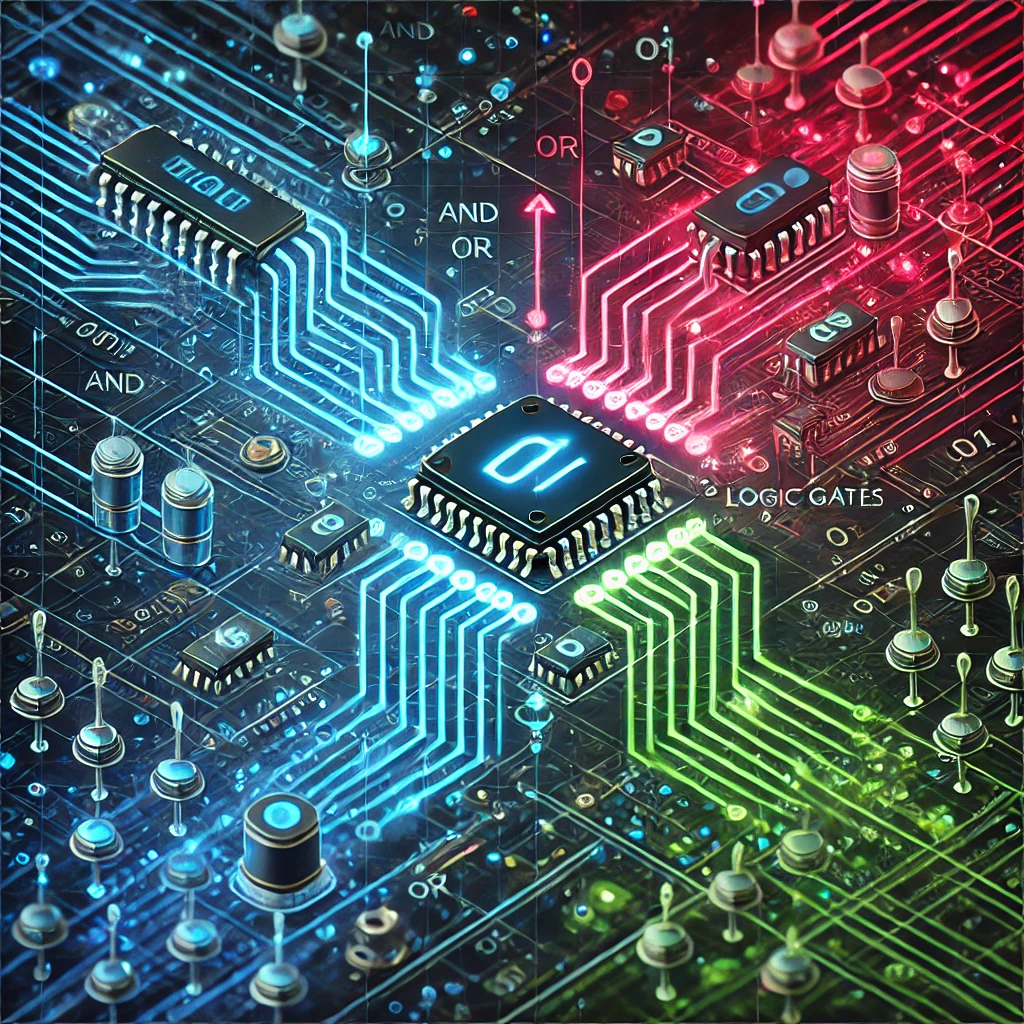Combinational Logic Circuits, Encoders, and Decoders: The Building Blocks of Digital Systems

Categories:
3 minute read
Introduction
In the intricate world of digital electronics, combinational logic circuits, encoders, and decoders form the fundamental building blocks. These components play a crucial role in processing and manipulating digital signals, enabling the realization of a vast array of electronic devices and systems.
Combinational Logic Circuits
Combinational logic circuits are digital circuits whose outputs depend solely on their current inputs. They do not store any information and operate on a purely combinatorial basis. These circuits are typically constructed using logic gates, such as AND, OR, NOT, NAND, NOR, XOR, and XNOR gates.
Common Types of Combinational Logic Circuits
Adders: Adders are used to perform arithmetic operations on binary numbers. They can be simple half-adders, full-adders, or ripple-carry adders.
Subtractors: Subtractors are used to perform subtraction operations on binary numbers. They can be implemented using adders and inverters.
Comparators: Comparators are used to compare two binary numbers and determine their relative magnitudes.
Decoders: Decoders are used to convert a coded input into a set of individual output signals.
Encoders: Encoders are used to convert a set of individual input signals into a coded output.
Multiplexers: Multiplexers are used to select one of multiple input signals based on a control signal.
Demultiplexers: Demultiplexers are used to distribute a single input signal to multiple output lines based on a control signal. Encoders
Encoders are combinational circuits that convert a set of individual input signals into a coded output. They are often used to reduce the number of wires required to transmit information.
Types of Encoders:* Priority Encoder: A priority encoder assigns a unique code to the highest-priority active input.
Octal-to-Binary Encoder: Converts an octal input into a binary output.
BCD-to-Seven-Segment Decoder: Converts a binary-coded decimal (BCD) input into a seven-segment display output.
Decoders
Decoders are combinational circuits that convert a coded input into a set of individual output signals. They are often used to control the selection of data or signals.
Types of Decoders:* 2-to-4 Decoder: Decodes a 2-bit input into 4 output lines.
3-to-8 Decoder: Decodes a 3-bit input into 8 output lines.
BCD-to-Decimal Decoder: Decodes a BCD input into 10 output lines.
Applications of Combinational Logic Circuits, Encoders, and Decoders
These components are widely used in various digital systems, including:
Microprocessors and microcontrollers: They form the core of the control unit, arithmetic logic unit (ALU), and other functional units.
Memory systems: They are used for address decoding, data selection, and write enable signals.
Input/output devices: They are used for data conversion, encoding, and decoding.
Communication systems: They are used for modulation, demodulation, and error detection/correction.
Digital signal processing: They are used for filtering, sampling, and quantization. Design and Implementation
Combinational logic circuits, encoders, and decoders can be designed using various methods, including:
Truth tables: A truth table lists all possible input combinations and their corresponding outputs.
Boolean algebra: Boolean algebra can be used to express the circuit’s logic using Boolean equations.
Karnaugh maps: Karnaugh maps are a graphical tool for simplifying Boolean expressions.
Hardware description languages (HDLs): HDLs like Verilog and VHDL can be used to describe the circuit’s behavior in a textual format. Conclusion
Combinational logic circuits, encoders, and decoders are the fundamental building blocks of digital systems. They enable the processing and manipulation of digital signals, enabling the realization of a wide range of electronic devices and applications. Understanding these components is essential for anyone working in the field of digital electronics.
Feedback
Was this page helpful?
Glad to hear it! Please tell us how we can improve.
Sorry to hear that. Please tell us how we can improve.